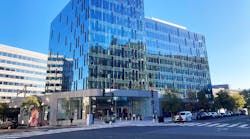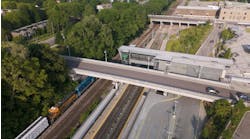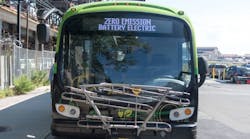Sound Transit Station Earns LEED Gold
Sound Transit's Lynnwood City Center Station has been awarded the Leadership in Energy and Environmental Design (LEED) Gold certification from the U.S. Green Building Council. The certification recognizes the entire station campus, including the station, parking garage and public plaza areas.
The LEED certification provides the agency independent verification of sustainable design just two months ahead of the opening of the Lynnwood Link Extension on Aug. 30.
"This LEED Gold certification for Lynnwood City Center Station is a significant milestone, exemplifying our commitment to sustainability," said King County Executive and Sound Transit Board Chair Dow Constantine. "It sets a high standard for future stations and serves as a powerful reminder that the environmental benefits of light rail extend far beyond the transit system itself."
"This achievement is the result of the hard work and shared vision of the construction team, engineers, designers and Sound Transit staff who collaborated on the Lynnwood station," said Terri Mestas, Sound Transit’s deputy CEO for mega capital project delivery. "They fulfilled Sound Transit’s commitment to creating a sustainable campus that will serve as a model for future LEED certification of other new Sound Transit stations and that will become a new standard throughout the system."
Key members of the design team were LMN as station architects, HNTB as lead engineers and O’Brien 360 for sustainability certification. Skanska Constructors L300 JV did the civil construction for the project.
Sound Transit notes the certification recognized several areas of achievement, including the quality of the transit connections at the station, protection of habitat, including restoration of Scriber Creek, energy efficiency of lighting and mechanical systems and diversion of construction waste.
Specific achievements include the following:
- 30 percent energy cost reduction vs the ASHRAE 90.1 baseline, with advanced metering for real-time monitoring
- 34 percent indoor water use reduction through efficient fixtures vs Environmental Protection Agency (EPA) baseline
- 71 percent reduction in irrigation water use through native, drought-tolerant plant species vs EPA baseline
- 85 percent of open space covered in vegetation via pedestrian promenade, walkways, bike trails and planting areas
- 81 percent of construction waste diverted from landfills
- 100 percent of paints, coatings, adhesives, sealants, flooring, ceiling and insulation met LEED low-VOC requirements





